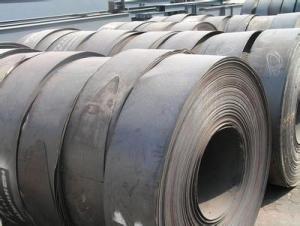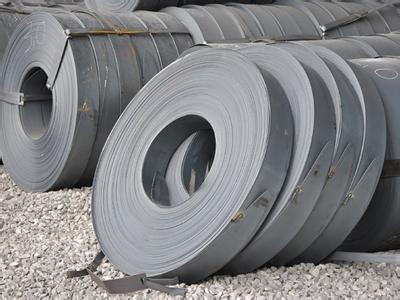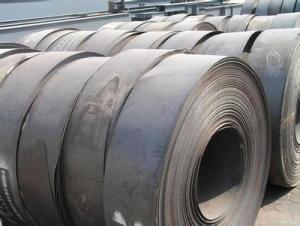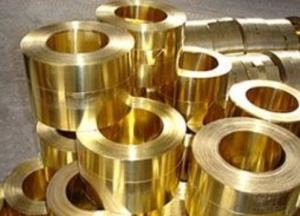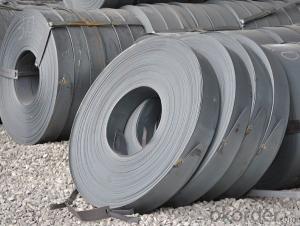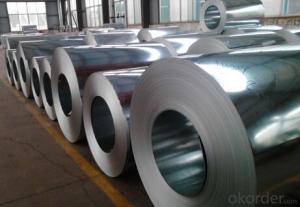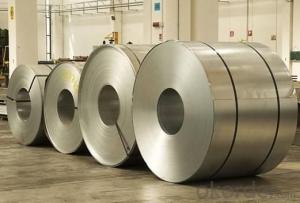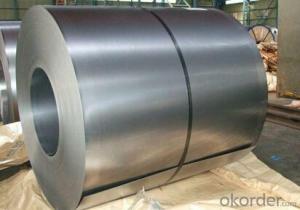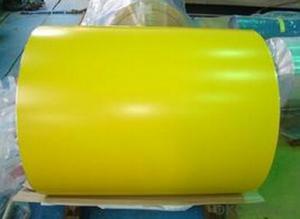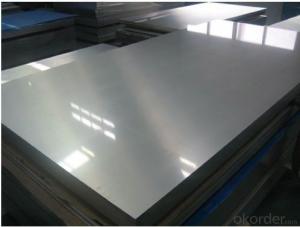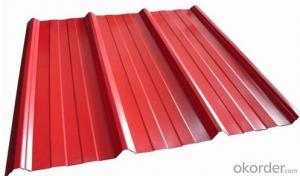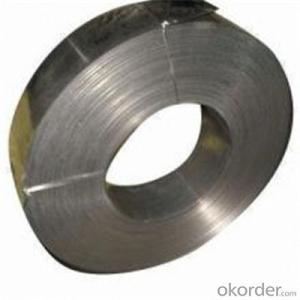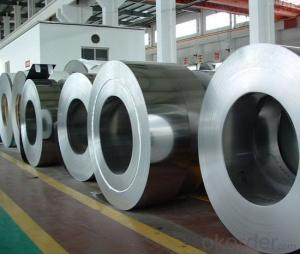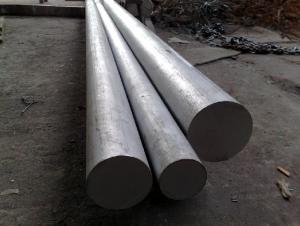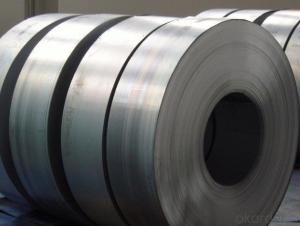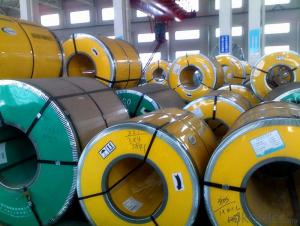High grade hot rolled strip
- Loading Port:
- China Main Port
- Payment Terms:
- TT OR LC
- Min Order Qty:
- -
- Supply Capability:
- -
OKorder Service Pledge
OKorder Financial Service
You Might Also Like
Strip is all kinds of steel rolling enterprises in order to adapt to different industrial sectors industrialized production of various kinds of metal or the needs of machinery products and the production of a narrow and long steel plate. Width of strip steel is also called the steel belt, it is within the 1300 mm, length according to the size of each roll is slightly different.
define
Strip roll supply commonly, have high dimensional accuracy, good surface quality, easy to machining, saving materials, etc. With steel plate, the same strip according to the material divided into two categories, ordinary steel strip and high quality steel strip; According to the machining method cent two kinds of hot rolled strip steel, cold rolled strips.
Strip steel is widely used in the production of welded steel pipe and cold bend section steel billet, manufacturing bicycle frame, wheels, clamp, washer, spring leaf, saw blade, metal products and blades, etc.
The process flow
The editor
Cold-rolled strip steel production process is commonly: pickling - rolling - processing lubrication to annealing, flat - shear - packaging.
Cold-rolled strip steel, pickling, rolling, annealing, rolling size synchronous lubrication, rust-proof oil - flat scale - polishing - packing
Heating furnace of hot rolled strip steel: - phosphorus removal machine, roughing mill, phosphorus removal machine, finishing mill, surface quality inspection instrument - layer of cold - reel, baling machine, injection machine - volume base slab
Inside furnace hot rolling strip production process: first, the temperature is up to the required rolling temperature, and is entered into the roughing roller on the slab of phosphorus removal machine of iron oxide, and then into the roughing rolling unit width and thickness of strip rolling, and then by the roller conveyor to finishing phosphorus removal machine to process the iron oxide on the strip surface, after entering the finishing rolling unit on the thickness and width of the strip is more precision rolling, strip steel by roller through a layer of cold surface temperature before coiling, after strict control into the reel be coil last baling, spray into the packaging volume of inventory.
- Q: Can steel strips be used in the production of kitchen utensils?
- Yes, steel strips can be used in the production of kitchen utensils. Steel is a popular choice for kitchen utensils due to its strength, durability, and resistance to corrosion. Steel strips are commonly used as the raw material for manufacturing various kitchen utensils such as knives, spoons, forks, spatulas, and tongs. These strips can be shaped, formed, and forged into the desired utensil shapes and sizes. Steel strips also provide a smooth and hygienic surface, making them ideal for food handling and cooking purposes. Additionally, steel utensils are easy to clean and maintain, making them a preferred choice in many kitchens.
- Q: What are the different surface polishing techniques for steel strips?
- There are several different surface polishing techniques for steel strips, including mechanical polishing, chemical polishing, electrochemical polishing, and electropolishing. Mechanical polishing involves the use of abrasives and polishing compounds to remove imperfections and create a smooth surface. Chemical polishing uses chemical solutions to dissolve surface irregularities. Electrochemical polishing applies an electrical current to remove material and enhance the surface finish. Electropolishing is a combination of chemical and electrochemical processes that removes a thin layer of material to improve the surface smoothness.
- Q: What are the common grades of steel used for strips?
- There are several common grades of steel that are widely used for strips in various industries. These grades are selected based on the specific requirements of the application, such as strength, durability, corrosion resistance, and machinability. One of the most commonly used grades of steel for strips is carbon steel, specifically low carbon steel (such as AISI 1008 or 1010). Low carbon steel is known for its excellent formability and weldability, making it suitable for a wide range of applications including automotive components, construction materials, and general manufacturing. Another commonly used grade is stainless steel, which is highly resistant to corrosion and oxidation. This makes stainless steel strips ideal for applications where exposure to moisture, chemicals, or extreme temperatures is expected. Common stainless steel grades used for strips include AISI 304 and 316, which offer excellent strength and corrosion resistance. High-strength low alloy (HSLA) steel is another grade commonly used for strips. HSLA steel combines high strength with good formability, making it suitable for applications that require both strength and flexibility. Common HSLA steel grades for strips include ASTM A572 and A1011. Additionally, certain industries may require specialized grades of steel for specific applications. For example, the automotive industry often utilizes high-carbon steel strips for manufacturing vehicle components that require high strength and wear resistance. Ultimately, the choice of grade depends on the specific requirements of the application, and it is important to consult with engineers or material experts to determine the most suitable grade of steel for a particular project.
- Q: Are steel strips suitable for making aerospace components?
- Yes, steel strips are suitable for making aerospace components.
- Q: What are the industry standards for steel strip production?
- The industry standards for steel strip production typically include specifications for the composition, dimensions, mechanical properties, and surface quality of the steel strip. These standards ensure that the steel strip meets the required quality and performance criteria for various applications, such as automotive, construction, and manufacturing industries. Additionally, industry standards may also cover processes and techniques related to steel strip production, such as hot rolling, cold rolling, annealing, and coating. Compliance with these standards is crucial for ensuring the consistency, reliability, and safety of steel strip products in the market.
- Q: Can steel strips be used for making architectural elements?
- Yes, steel strips can be used for making architectural elements. Steel strips are versatile and can be shaped, bent, and welded into various architectural designs and structures. They offer strength, durability, and a sleek aesthetic, making them suitable for applications such as beams, columns, cladding, and decorative features in buildings.
- Q: What are the factors that affect the impact resistance of steel strips?
- There are several factors that can significantly influence the impact resistance of steel strips. 1. Composition: The chemical composition of the steel strip plays a crucial role in determining its impact resistance. The presence of certain alloying elements, such as manganese, nickel, and chromium, can enhance the steel's ability to withstand impact forces. 2. Hardness: The hardness of the steel strip is another key factor. Hardened steel strips tend to have higher impact resistance due to their ability to absorb energy and resist deformation under impact. 3. Microstructure: The microstructure of the steel strip, including factors such as grain size and distribution, can greatly influence its impact resistance. A fine and uniform microstructure tends to enhance the steel's toughness and resistance to crack propagation. 4. Heat treatment: Heat treatment processes, such as quenching and tempering, can significantly affect the impact resistance of steel strips. Proper heat treatment can improve the steel's strength and toughness, making it more resistant to impact. 5. Surface condition: The surface condition of the steel strip, including factors like surface roughness and defects, can affect its impact resistance. Smooth and defect-free surfaces tend to provide better resistance against impact forces. 6. Thickness: The thickness of the steel strip also plays a role in its impact resistance. Thicker strips generally offer better resistance to impact, as they can absorb and distribute the energy more effectively. 7. Temperature: The temperature at which the steel strip operates can impact its impact resistance. Steel strips exposed to low temperatures may become more brittle, reducing their ability to withstand impact forces. 8. Manufacturing process: The method used to manufacture the steel strip can influence its impact resistance. Factors such as rolling, heat treatment, and cooling methods can all affect the final properties of the strip, including its impact resistance. Overall, a combination of these factors determines the impact resistance of steel strips. Manufacturers must carefully consider these factors to ensure that the steel strips meet the desired impact resistance requirements for specific applications.
- Q: How are steel strips used in the petrochemical industry?
- Steel strips are commonly used in the petrochemical industry for various applications such as pipe manufacturing, storage tanks, and structural components. They provide strength, durability, and corrosion resistance to withstand the harsh environments and high temperatures associated with petrochemical processes. Additionally, steel strips are used in the fabrication of equipment and machinery required for refining, processing, and transporting petrochemical products.
- Q: How are steel strips tested for edge condition?
- Steel strips are tested for edge condition using various methods to ensure their quality and suitability for specific applications. One common method is visual inspection, where trained personnel examine the edges of the steel strips for any defects or irregularities. This includes checking for burrs, cracks, roughness, or any other imperfections that could affect the performance of the steel strip. Another method used is to conduct a physical measurement of the edge condition. This can be done using specific tools such as calipers or micrometers to measure the dimensions of the edges. The measurements are compared against the required specifications to determine if the edge condition meets the desired standards. Furthermore, steel strips can be tested for edge condition using non-destructive testing techniques such as ultrasonic testing or magnetic particle inspection. Ultrasonic testing involves sending high-frequency sound waves through the steel strip and analyzing the reflected waves to detect any flaws in the edges. Magnetic particle inspection, on the other hand, uses magnetic fields and iron particles to identify any surface or near-surface defects in the edges. In some cases, the steel strips may also undergo mechanical testing, where samples are subjected to various stress conditions to evaluate the edge condition's strength and durability. This can include tests like bend tests, impact tests, or hardness tests, which assess the ability of the edges to withstand different loads and forces. Overall, a combination of visual inspection, physical measurement, non-destructive testing, and mechanical testing is employed to thoroughly evaluate the edge condition of steel strips and ensure their quality and suitability for different applications.
- Q: How can the surface finish of steel strips be improved?
- There are several ways to improve the surface finish of steel strips. Firstly, the use of proper cleaning and degreasing techniques is crucial. Before any surface treatment, the steel strips should be thoroughly cleaned to remove any dirt, grease, or contaminants that may affect the finish. This can be done through mechanical cleaning methods, such as abrasive blasting, or chemical cleaning methods, such as pickling. Secondly, using appropriate surface treatment methods can greatly enhance the finish. One common technique is mechanical polishing, which involves the use of abrasive materials to smooth the surface and remove any imperfections. Additionally, chemical treatments like acid etching or electroplating can be applied to achieve a desired surface texture or to provide a protective coating. Furthermore, optimizing the rolling process can also contribute to improving the surface finish. Ensuring proper lubrication between the steel strips and the rolling equipment can minimize surface defects and improve the overall finish. Additionally, controlling the temperature and speed during the rolling process can help in achieving a smoother surface. Lastly, implementing quality control measures is essential to consistently achieve a high-quality surface finish. Regular inspection and testing of the steel strips can help identify any defects or issues early on, allowing for timely corrective actions. By monitoring and adjusting various parameters throughout the production process, the surface finish of steel strips can be improved and maintained at a desired level.
Send your message to us
High grade hot rolled strip
- Loading Port:
- China Main Port
- Payment Terms:
- TT OR LC
- Min Order Qty:
- -
- Supply Capability:
- -
OKorder Service Pledge
OKorder Financial Service
Similar products
Hot products
Hot Searches
Related keywords
